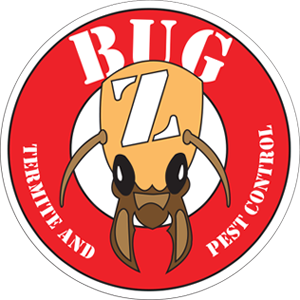Citronella Ants
The citronella ants get their name from the lemon verbena or citronella odor they emit when threatened or stepped on.
What do Citronella ants look like?
Citronella ants are known for their yellow to light brown color, which is why they are sometimes referred to as "yellow ants." They have a distinctive citrus or lemon-like smell when crushed, hence the name "citronella." Worker ants of this species typically measure between 4 to 4.5 mm in length. The larger, reproductive members of the colony, such as queens and males, are usually larger than the workers. Citronella ants are often mistaken for termites when they swarm to mate because of their winged reproductive forms. However, their bright yellow coloration is a key characteristic that distinguishes them from termites.
Nuisance or danger?
Citronella ants are generally considered more of a nuisance than a danger. They do not pose a significant threat to humans or structures. Unlike carpenter ants, citronella ants do not damage wood or building materials, as they prefer to nest in soil and under rocks. Their presence becomes noticeable and potentially bothersome primarily when the winged reproductive ants swarm, which can sometimes occur inside homes.
The primary concern with citronella ants is the inconvenience or alarm their swarming behavior might cause, especially since their swarms can be large. Additionally, the lemon or citronella scent they release when disturbed or crushed can be surprising. However, they are not aggressive, do not bite or sting humans, and are not known to carry diseases. Therefore, while their presence might be unwelcome, they are not considered dangerous.
How Do I Know If I have Citronella Ants?
Identifying citronella ants involves observing several key characteristics and behaviors. Here’s what to look out for to determine if you have citronella ants:
1. Color and Size: Citronella ants are typically yellow to light brown. Worker ants are about 4 to 4.5 mm in length. Observing these ants up close can help you identify them by their distinct color.
2. Citrus Scent: A defining feature of citronella ants is the lemon or citronella scent they emit when crushed. If you notice this citrus-like smell after squishing an ant, it’s a strong indicator that you’re dealing with citronella ants.
3. Swarming Behavior: These ants are known for their swarming behavior, especially the winged reproductive ants. If you witness a large swarm of yellowish ants, particularly around the foundation of your home or emerging from cracks in the soil, it’s likely a citronella ant swarm.
4. Location of Activity: Citronella ants prefer to nest in moist soil, under rocks, or beneath logs. If you find ants in these locations, closely observe their color and behavior to see if they match the description of citronella ants.
5. Lack of Indoor Damage: Unlike carpenter ants or termites, citronella ants do not damage wood or structures. Their presence inside a home is usually accidental, as they are attracted to moisture or are looking to escape extreme weather conditions.
If you observe these signs and are still uncertain, consider contacting BugZ professionals for accurate identification and advice on managing the situation.
Why do I have them?
If you find citronella ants in or around your home, it’s usually because of specific environmental conditions that are attractive to them. Here are some reasons why you might have citronella ants:
1. Moisture: Citronella ants are attracted to moist environments. Areas around your home with poor drainage, leaks, or standing water can create ideal nesting sites for these ants.
2. Nesting Sites: They prefer to nest in soil, under rocks, logs, or landscape timbers, and sometimes next to foundations. If your property offers these conditions, it can naturally attract citronella ants.
3. Access to Food: While citronella ants primarily feed on the honeydew produced by aphids and other insects, they might be drawn close to homes in search of additional food sources or moisture.
4. Swarming Season: If you’re noticing them at certain times of the year, it might be during their swarming season when the reproductive ants emerge from their nests to mate and establish new colonies. This typically occurs in late spring or summer.
5. Accidental Entry: Sometimes, citronella ants enter homes by accident while foraging or during their swarming period. If your home has cracks, crevices, or unsealed entry points, it’s easier for them to get inside.
Understanding these factors can help you address the conditions that might be attracting citronella ants to your property. Making adjustments to reduce moisture, sealing entry points, and managing the landscape around your home can help deter them.
What should I do if I have Citronella Ants?
If you've identified citronella ants in or around your home, there are several steps you can take to manage and potentially eliminate them:
1. Eliminate Moisture: Since moisture attracts citronella ants, fix leaks, improve drainage, and ensure gutters and downspouts are functioning properly to direct water away from your home.
2. Remove Nesting Sites: Clear away debris such as leaf litter, logs, rocks, and mulch from the foundation of your home. These are potential nesting sites for citronella ants.
3. Seal Entry Points: Check your home for cracks, crevices, and openings. Seal these entry points with caulk or another appropriate material to prevent ants from entering.
4. Manage Aphid Populations: Citronella ants are attracted to the honeydew produced by aphids. Managing aphid populations on garden plants can help reduce food sources for citronella ants.
5. Proper Sanitation: Keep your home clean and free of food debris. Store food in airtight containers and manage garbage and recycling bins effectively to discourage foraging by ants.
7. Consult a Professional: If the infestation is large or difficult to manage, consider contacting BugZ Termite and pest control team. They can provide targeted treatment and advice for preventing future infestations.
Remember, while citronella ants are more of a nuisance than a destructive pest, taking proactive steps can help you manage and reduce their presence around your home.
WHAT TREATMENT IS EFFECTIVE AND HOW DO I PREPARE FOR IT?
NEVER use an over-the-counter insecticide for ant infestations. These readily available chemicals kill on contact, giving you the false sense that you’ve killed them all! In fact, you’ve now caused the queen to go into “overdrive”, reproducing her missing colony members at a much more rapid pace. Ant treatment involves treating the nest and baiting near scent trails, essentially transferring chemicals back to the queen. Once she’s dead, the colony dies soon after.
Contact BugZ Termite and Pest Control at the first sign of any ant in the house or elsewhere on the property!
Effective treatment for citronella ants often involves addressing both the symptoms (ants inside your home) and the source (outside nests). Here’s how to prepare and what treatments can be effective:
Preparation Steps
1. Identify Activity: Note where you've seen ants or swarming activity, especially around your home’s foundation, under rocks, or near landscape features.
2. Reduce Moisture: Repair leaks, improve drainage, and dry out damp areas to make your property less attractive to citronella ants.
3. Sanitation: Clean up food spills, store food in sealed containers, and manage waste to reduce attractants.
4. Access Points: Seal cracks and crevices in your home’s foundation, around windows, doors, and other entry points to prevent ants from entering.
Effective Treatments
Professional Pest Control: For widespread infestations professional pest control services like BugZ can provide more comprehensive solutions, including identifying nests, using specialized treatments, and recommending further preventative measures.
Preparing your home by making it less attractive to ants and sealing entry points, combined with targeted treatment of nests and perimeters, can effectively manage and eliminate citronella ant infestations.
"If you can’t kill them…call us!"
© 2024 All Rights Reserved | Bug-Z Termite & Pest Control


